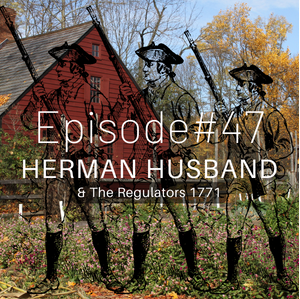On September 13, 1775, the Continental Congress welcomed three new delegates from Georgia. George Walton, Button Gwinett, and Lyman Hall, all of whom would sign the Declaration of Independence together on August 2, 1776.1 With Massachusetts already at war since April, many delegates were edging closer to establishing a civil government to manage their colonies. Defense plans emerged in different shapes and policies throughout the eastern seashore, and separate committees formed by the Continental delegates discussed trade techniques, plans for a military army, government policies, and the preset of the Declaration of Independence. One of the least populated colonies during this time was Georgia. With its lands stretching along the most southern border point of the British colonies, often recruits for defense required solicitation outside of Georgia’s boundaries. The 1st Georgia Regiment, approved by the Continental Army in November 1775, began organizing troops in Savannah in January 1776.2 The 2nd Georgia Regiment formed that summer in July consisted of eight companies filled with men from Virginia.3 The Continental Army was much more complex than many people realize today. It was the Continental Congress’ duty to ensure the protection and recognition of all citizens within the colonies. Since Georgia lacked the population to supply a full roster of troops, many Virginians and North / South Carolinians supplied the need.
Over the years, we have extended our research into the depths of local communities and the people living in the southern colonies from 1774 to 1781. In doing this, we have discovered the mentality and opinions related to independence from the actions inflicted by Great Britain, and although in some areas, the opinions varied, the majority supported complete division. North Carolina demonstrated this concept over and over again from 1771 to 1775 before the Continental Congress even began discussing a separate government. We will have more on North Carolina’s actions coming soon. Today, the article shares soldiers who were actively living in Georgia and fought for Georgia’s independence during the American Revolutionary War. Will we mention your ancestor? Our files contain family lineage on each of the soldiers listed below. Many contain remarkable stories of courage, determination, betrayal, and death. Each characteristic explains life during the most challenging years of our nation’s history. Let their truths be forever freed and preserved upon the land that values independence and rejoices evermore.

Minis, Phillip-(Philip)-credited as the first male child born in Savannah, Georgia to the parents of Abraham and Abigail Minis in 1734. The history surrounding the family prior to arriving in Georgia is amazing. Many records and letters give vivid details about the struggles and trials Abraham and Abigail faced before sailing the Atlantic. Philip, third child born to the couple, is mentioned many times in the Continental Congress and Army records. He was also named in the Royal Disqualifying Act of 1780. He was captured in Charlestown-(Charleston), SC in 1778.4 At first glance, we thought his family remained in Georgia, however additional notes indicate that his wife, Judith Pollock Minis traveled with him and was later allowed to return home to Georgia after serving as a domestic servant in Charleston. Most documents proclaim the couple having 5 to 6 children, but we have located 8 with two not living past the age of 1 year. The Pollock family holds a long history in Rhode Island where Philip and Judith were married in 1774. Our estimates place Judith’s birthdate as 1753 which signifies their ages at the time of marriage as 40 and 21. We could share so much more for Philip and his actions during his lifetime, but with limited time today, we must encourage you to research further into his past.
Barron, William Jr.-born in Barbados, settled in North Carolina circa 1760 and married to Prudence Davis. The Davis family has a long history in North Carolina. Migrated to Saint Paul’s Parish in Augusta, Georgia circa 1766. Many historians proclaim that William Barron arrived in Georgia from England in 1766 but we have found this not to be the case. William Barron Sr. was a merchant living in Barbados and frequently traveled to Boston, Maryland, Virginia and the Carolinas. Son William settled in Craven County, NC with his brothers, Samuel and John. The entire family migrated to Georgia and later joined the freedom movement. William served as Captain as did his brother, John and both were present during the Siege of Augusta in 1781. SAR proclaims that William was wounded and captured by the Tories in September 1781. He was later beheaded, and his head was put on display in Augusta for three weeks. But the records indicate a will for William Barron dated 1788 and a document by Colonel James McNeill stating that William Barron served his country well, (see quote from McNeill below). It’s obvious that the William Barron who was supposedly beheaded in 1781 is not the William Barron who died in Augusta, Georgia in 1789. The lineage for this family has been under debate for generations and even worse, many seem to not be able to place William Barron on any military roster during the war. Where is the proof for the beheading event in Augusta, Georgia? Surely, somewhere, somehow this terrible event that lasted for three weeks was documented by someone. We have researched the details of the battle, documented the eyewitness accounts of individual pension records of those who were there, and we find no proof of this event. We do find that the Creeks were present at Fort Cornwallis during April of 1781, but by June, they are not mentioned in the records. As the legend goes, the Tories encouraged the Creeks to kill Barron and the Tories placed his decapitated head on a pole in the middle of the town. The pension application of Lewis Nobles5 gives vivid details about the siege and the battles that took place soon after. Two separate events are mentioned by Noble and the witnesses who gave testimony on his behalf. Each of them stated that a battle with the Tories took place in Edgefield and in Lexington, SC. The patriots were victorious in both engagements. David H. Thurmond’s pension application6 gives us more detail about the events after Brown’s surrender at Fort Cornwallis. Thurmond describes the Creeks working with the British and taking prisoners and innocent citizens from their homes. Among these were Thurmond’s sister who was murdered by the Creeks according to his sworn testimony. But no mention of Captain Barron and his decapitated head on a pole for three weeks in Augusta, Georgia. William Barron was a Captain of a Volunteer Georgia Militia Company serving under Colonel John McNeill. According to our records here at the Attic, we have six children listed for William and Prudence Barron with a possibility of one more that we may have discovered just today. Their names are William Barron III, John, Samuel, Henry, Mary, Sarah, and now possibly a 7th child named Anne. Before we wrap things up with William Barron, we want to include Great-Uncle Joseph Barron who was an uncle to Willliam Barron Sr. and traveled from Barbados to Talbot County, Maryland circa 1691. He married and settled in the area as a landowner, merchant and farmer. The following generations migrated to Virginia, North Carolina and later Tennessee. Some members of this family migrated to Missouri and Texas during the early 19th century.
This is to certify, that Wm Barron hath steadfastly done his duty, from the time of passing of the Act at Augusta, to wit, on the 20th of August 1781, until the total Expulsion of the British from this state; and the said William Barron cannot, to my knowledge or belief, be convicted of plundering or distressing the country; and is therefore, under said act, entitled to a Bounty of Two Hundred Fifty Acres of good Land, free from taxes for ten years.
Given under my hand, at Pigeonhill the 15th day of March 1784.
Commendation Quote from Colonel John McNeill, Georgia Militia on William Barron
Other Soldiers Born in Georgia
- Ansley, Thomas
- Avery, John
- Barnett, John
- Barron, Samuel
- Bivins, William
- Bradley, John
- Bullock, James
- Bullock, James Stephens
- De Veaux, Peter
- Goldwire, James
- Groover, John
- Habersham, James
- Habersham, Joseph
- Hawley, Richard
- Houston, John
- Milledge, John
- Tattnall, Josiah
We hope that some of this information connects to your family. We will have much more about Georgia and North Carolina during the American Revolutionary War soon. Until then, enjoy your journey to the past.
Footnotes
- Cashin, Edward J. Revolutionary War in Georgia, New Georgia Encyclopedia https://www.georgiaencyclopedia.org/articles/history-archaeology/revolutionary-war-in-georgia/ ↩︎
- Berg, Frank Anderson Encyclopedia of Continental Army Units published Harrisburg, Pennsylvania 1972 ↩︎
- Knight, Lucian Lamar Georgia’s Roster of the Revolution published by Index Printing Company Atlanta, Georgia 1920 ↩︎
- Kole, Kaye The Minis Family of Georgia 1733-1992 published by the Georgia Historical Society Savannah, Georgia 1992 ↩︎
- Pension Application for Lewis Noble courtesy of the Southern Campaigns American Revolution Pension Statements & Rosters https://revwarapps.org/w13771.pdf ↩︎
- Pension Application for David H. Thurmond courtesy of the Southern Campaigns American Revolution Pension Statements & Rostershttps://revwarapps.org/s32010.pdf ↩︎
Sources
- Harrison, Patrick Morgan Descendants of William Barron Richmond, Virginia
- Hemperley, Marion R. English Crown Grants in St. Paul’s Parish in Georgia 1755-1775 published by State Printers Office Atlanta, Georgia 1974
- Robertson, Heard. “The Second British Occupation of Augusta, 1780-1781.” The Georgia Historical Quarterly, vol. 58, no. 4, 1974, pp. 422–46. JSTOR, http://www.jstor.org/stable/40580051. Accessed 23 July 2023.
- “United States Revolutionary War Rolls, 1775-1783,” database with images, FamilySearch (https://familysearch.org/ark:/61903/1:1:QL6Y-7KMY : 20 February 2021), William Baron, May 1780; citing May 1780, United States, citing NARA microfilm publication M246. Washington D.C.: National Archives and Records Services, 1980. FHL microfilm 830,399.
- Coleman, Kenneth The American Revolution in Georgia 1763-1789 published by University of Published Press Athens, Georgia 1958 https://ugapress.manifoldapp.org/system/actioncallout/d/3/6/d369fed9-117c-48da-ad44-25a7baa01e1e/attachment/4bf32255f36b4ee380f308dd5c17c933.pdf
- Hartford Courant, March 16, 1910, Page 16. via Newspapers.com (https://www.newspapers.com/article/hartford-courant-16/21669330/ : accessed July 24, 2023)
- Journals of the Continental Congress Volumes 1-34 published 1904-1937 Library of Congress
- Letters to Delegates of Congress 1774-1789 published 1976-2000 Library of Congress
- (1779) A new and accurate map of the province of Georgia in North America. [London?: s.n] [Map] Retrieved from the Library of Congress, https://www.loc.gov/item/2008625108/.
Categories: American Revolutionary War, Featured Articles, Georgia











Always enjoy your data. Looking forward to Davis family out of NC that you mentioned for next post. Ruby Phillips Harpst
Sent from Yahoo Mail for iPhone
LikeLiked by 1 person
https://allthingsliberty.com/2022/02/a-demographic-view-of-the-georgia-continental-line-and-militia-1775-1783/
You may find this interesting information on Georgia soldiers.
LikeLiked by 1 person